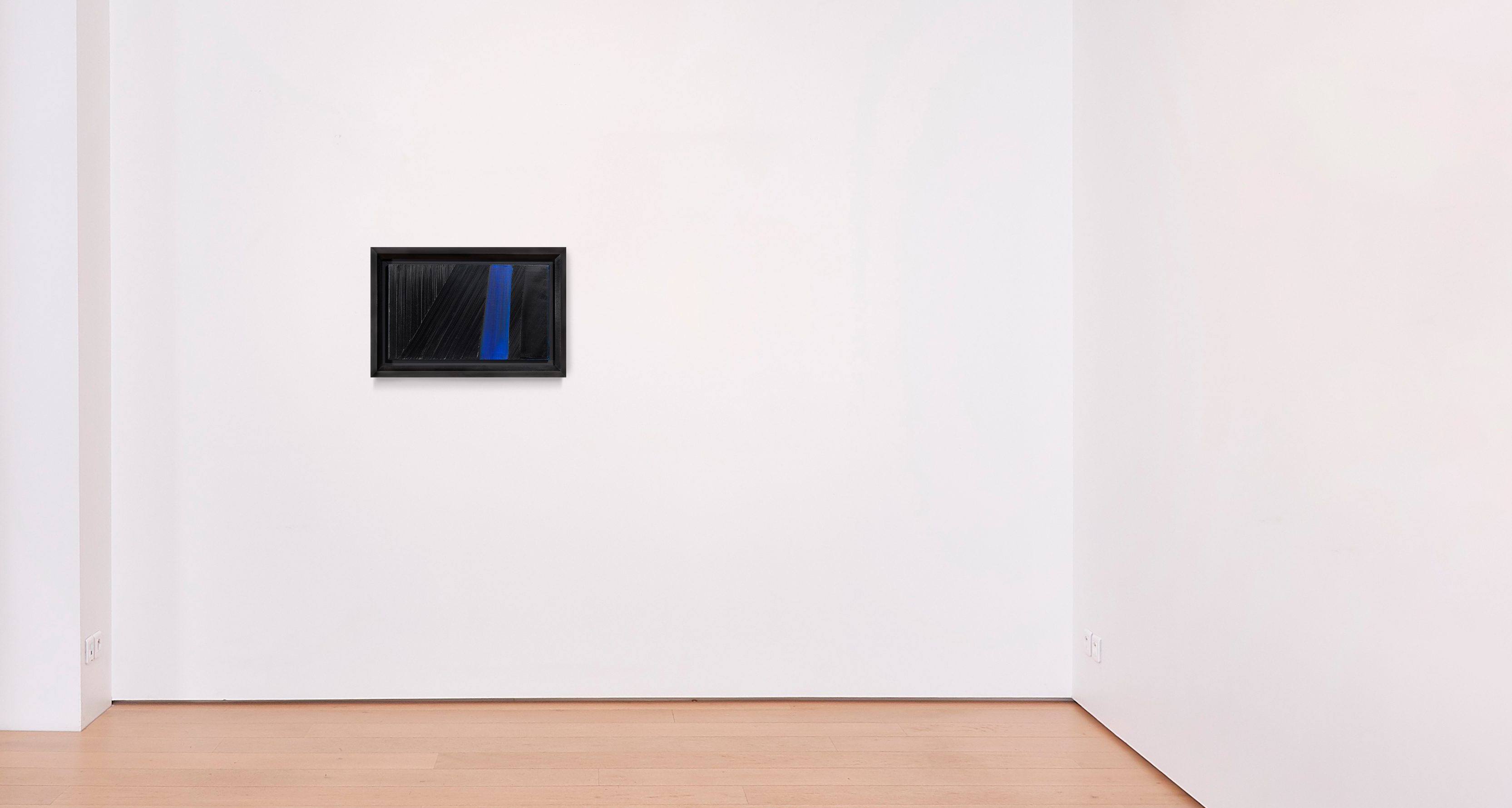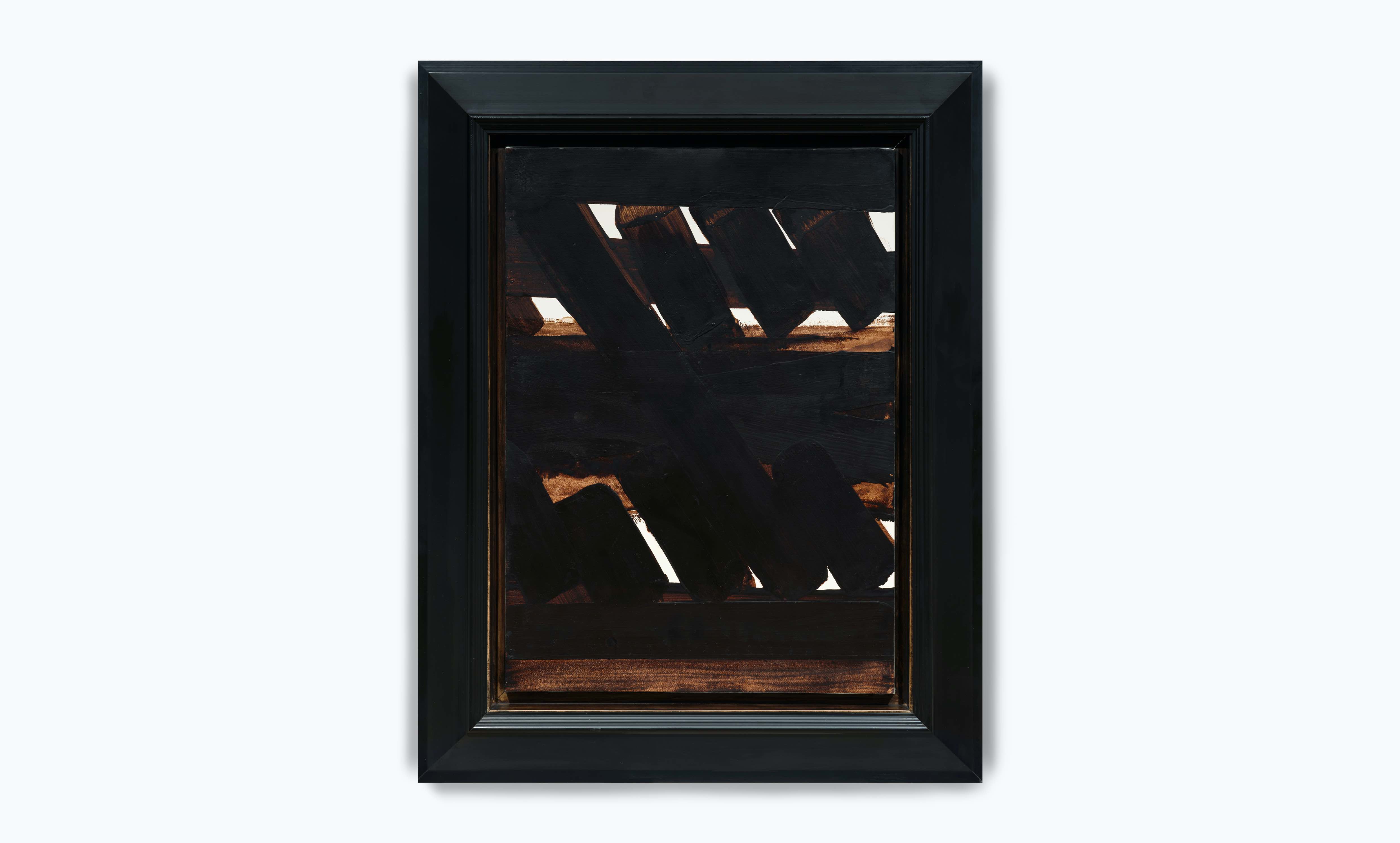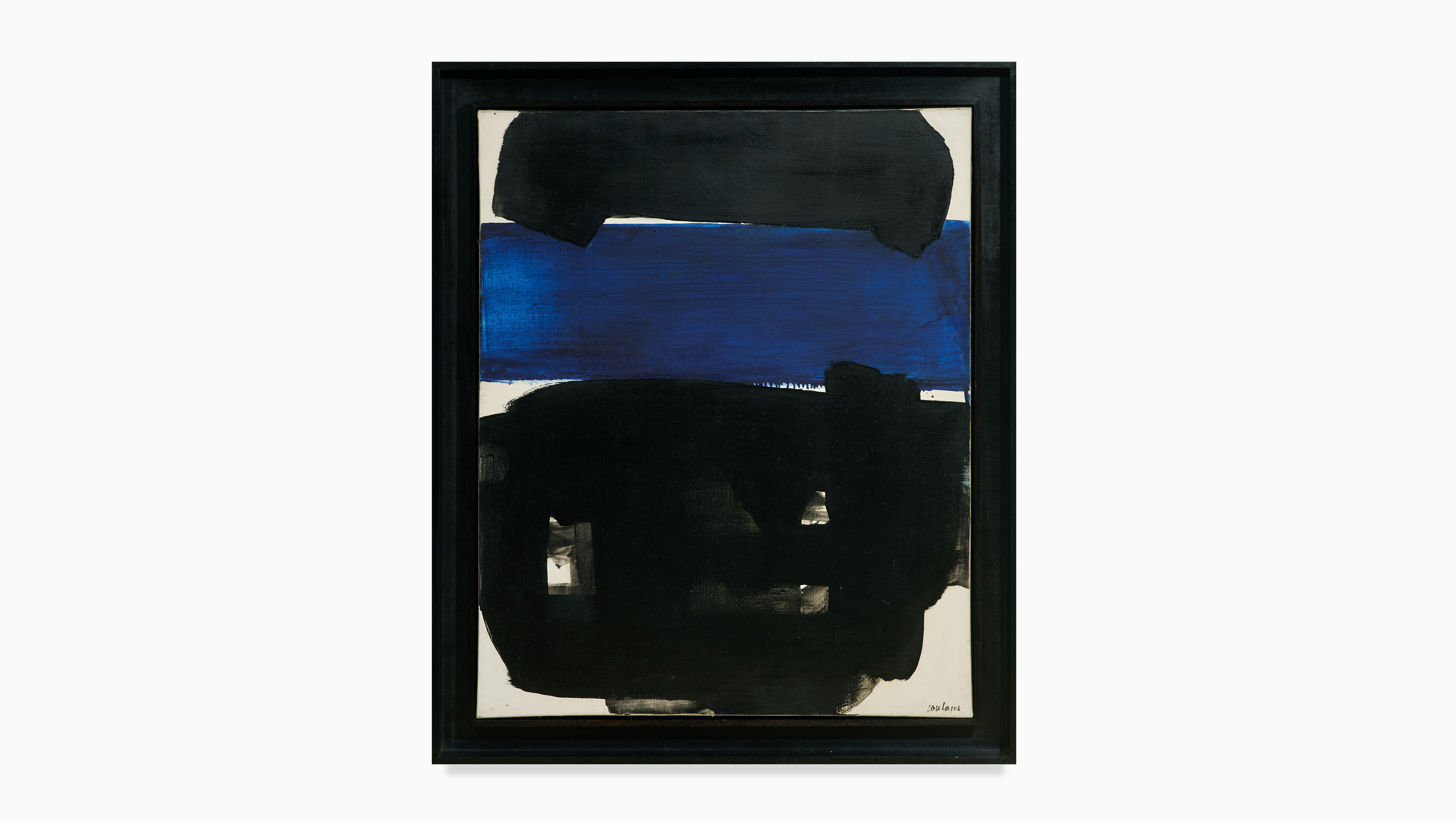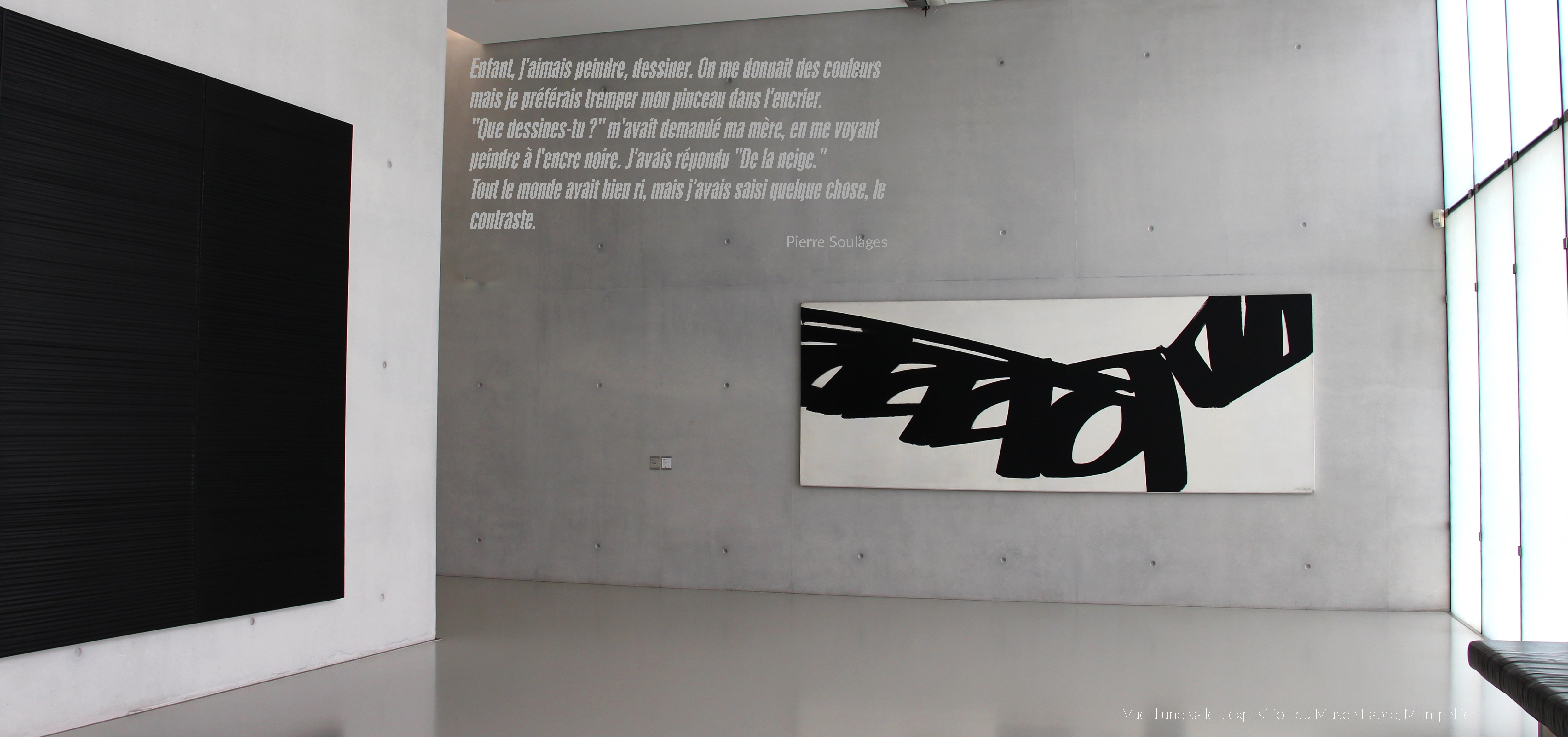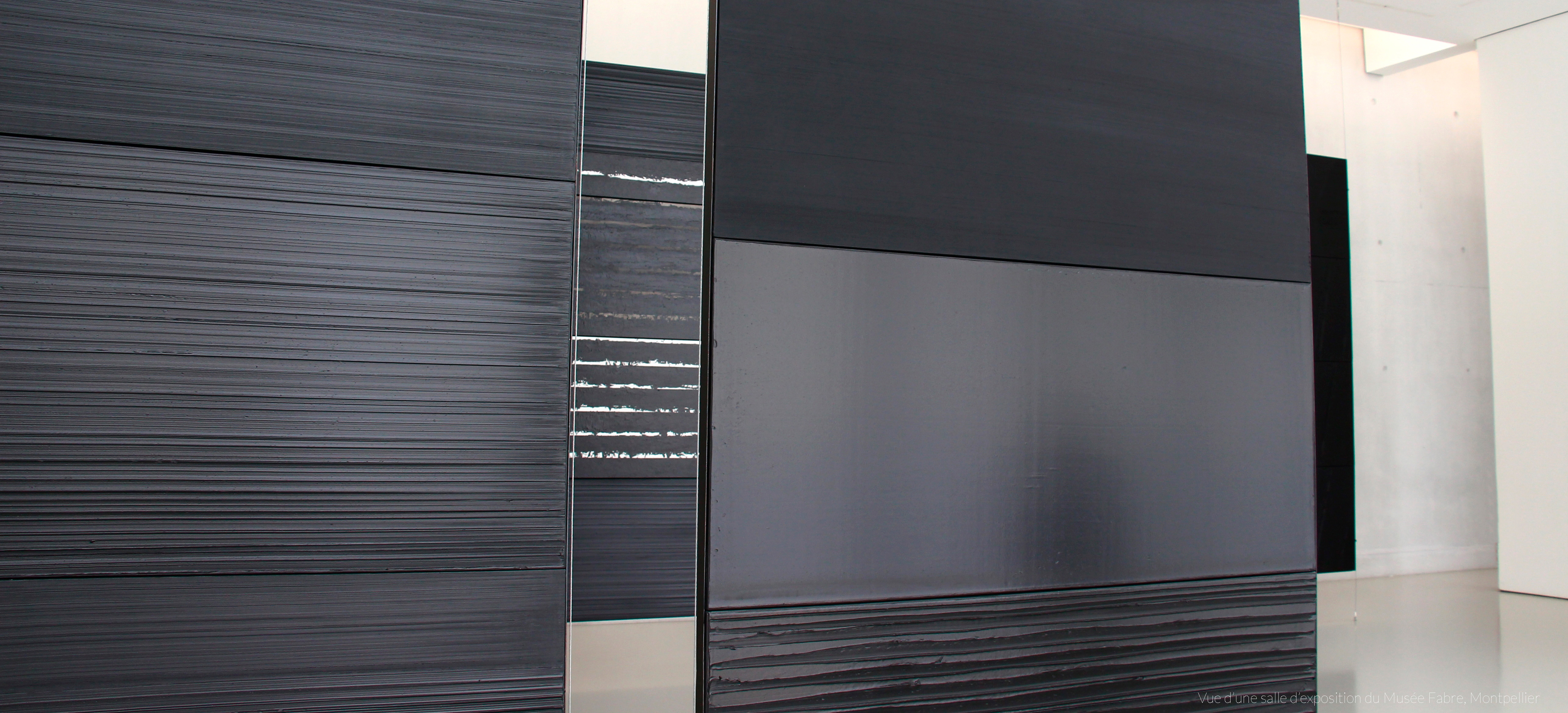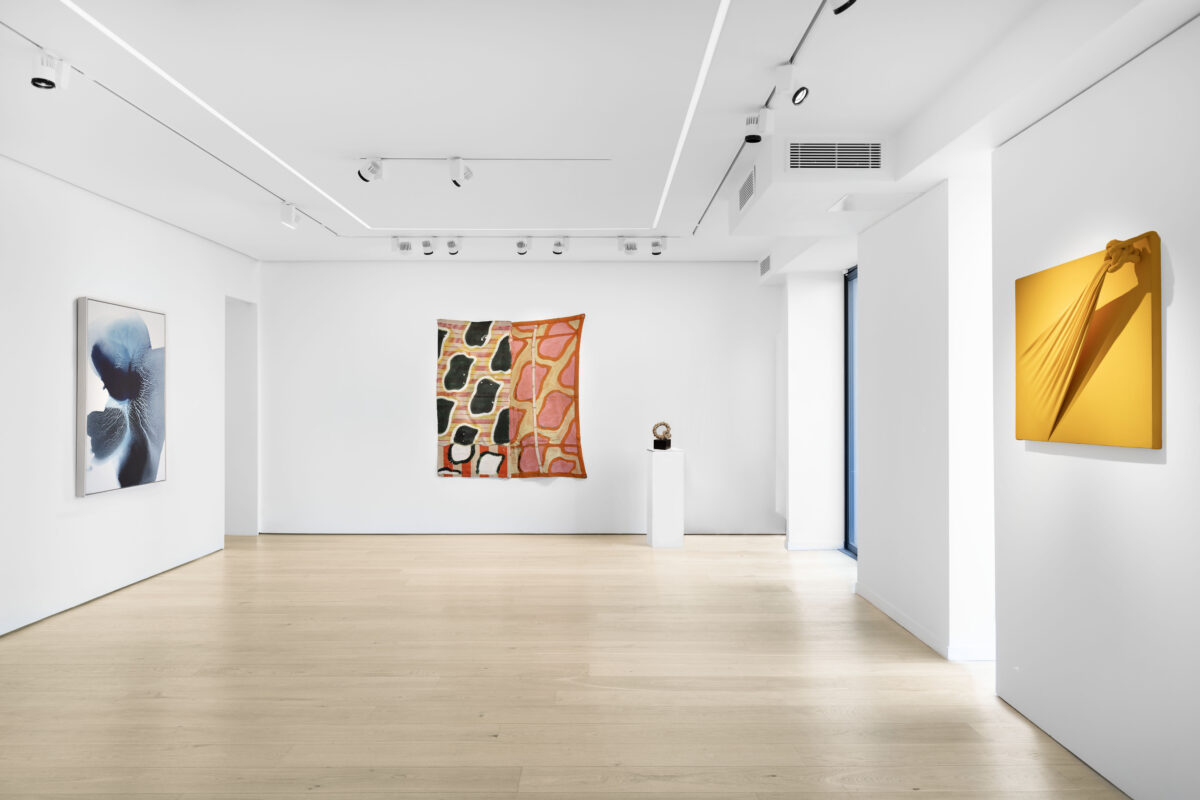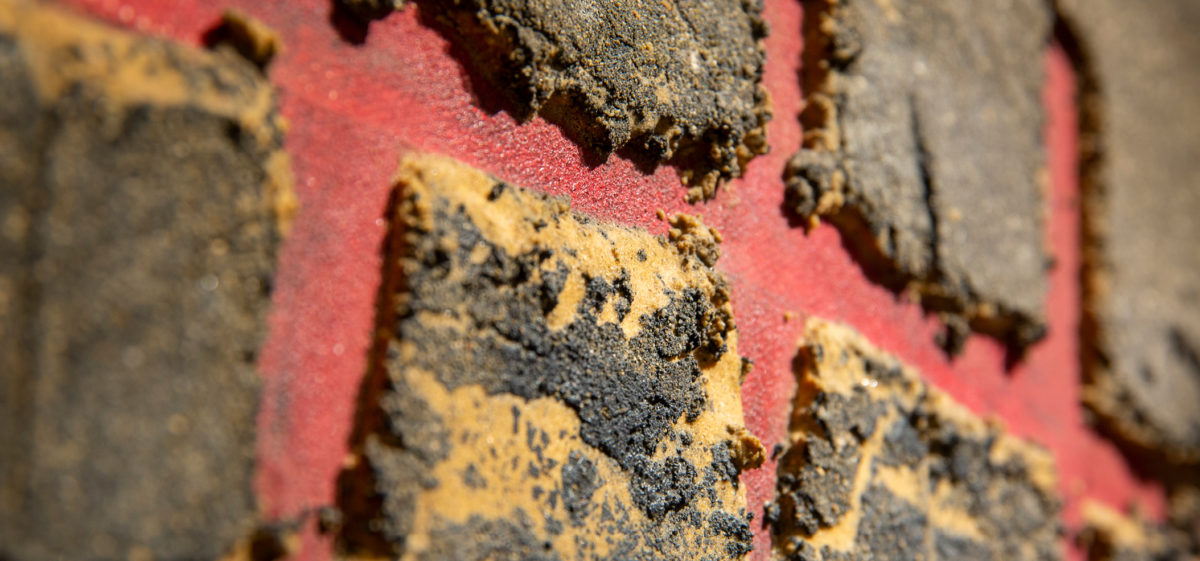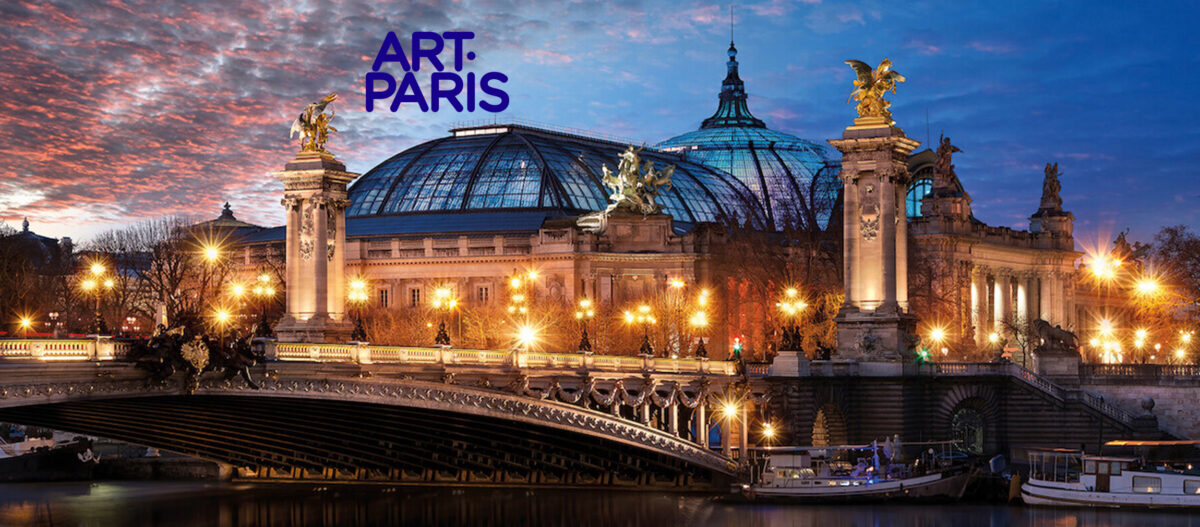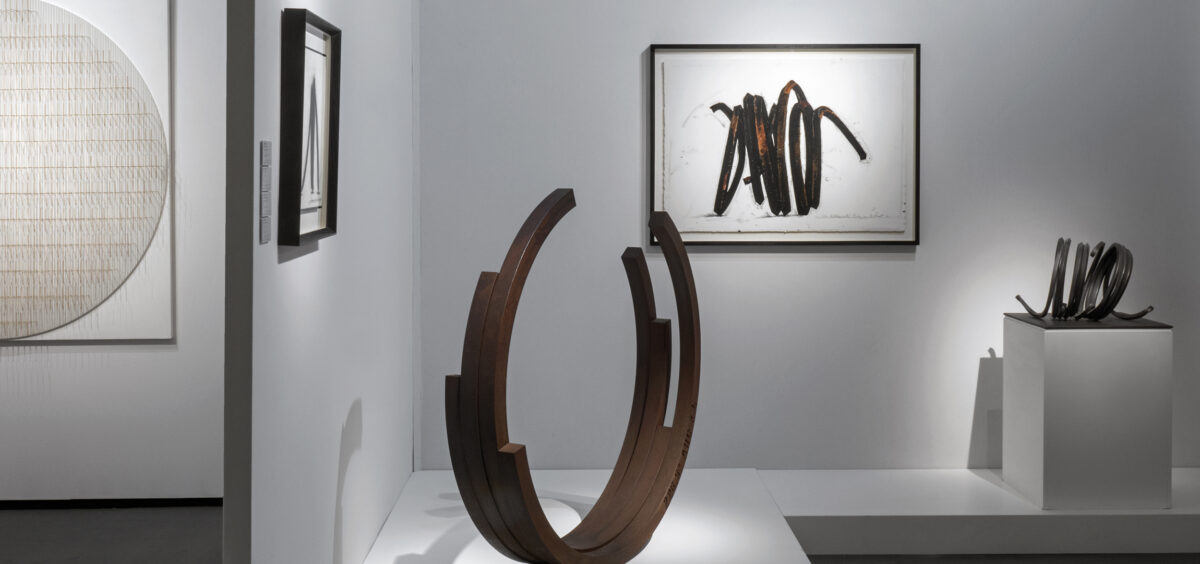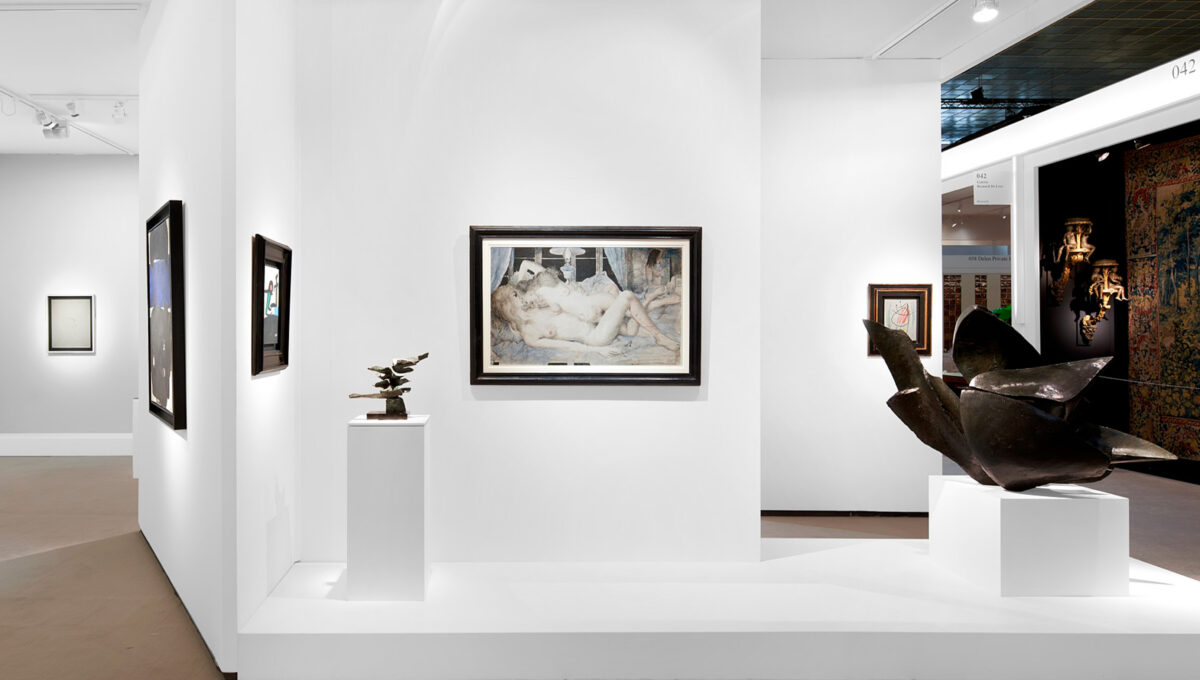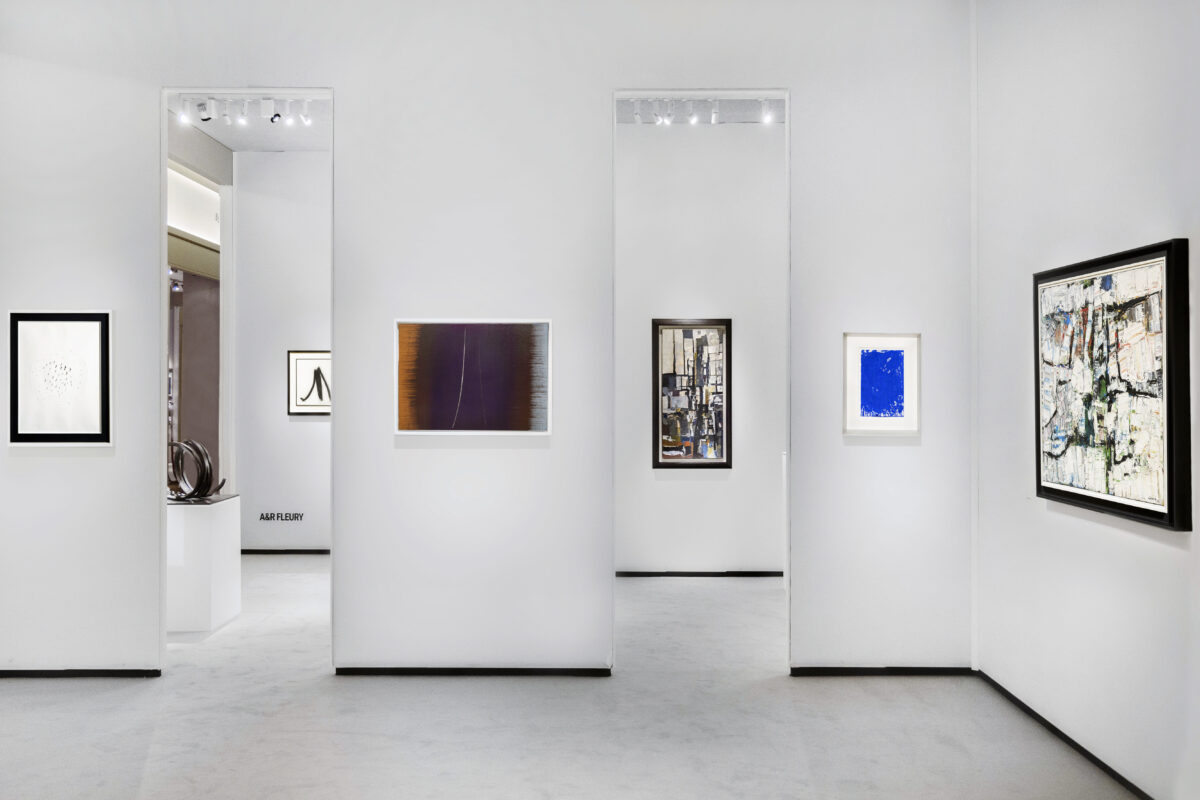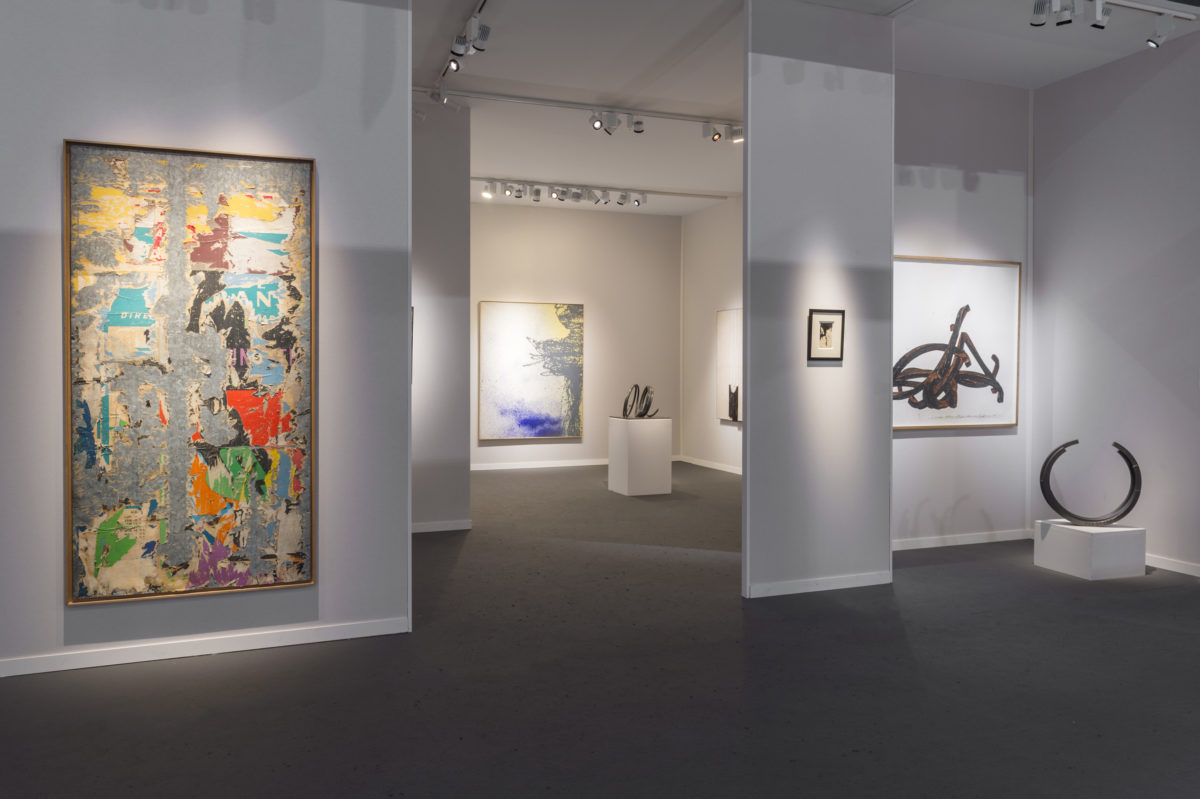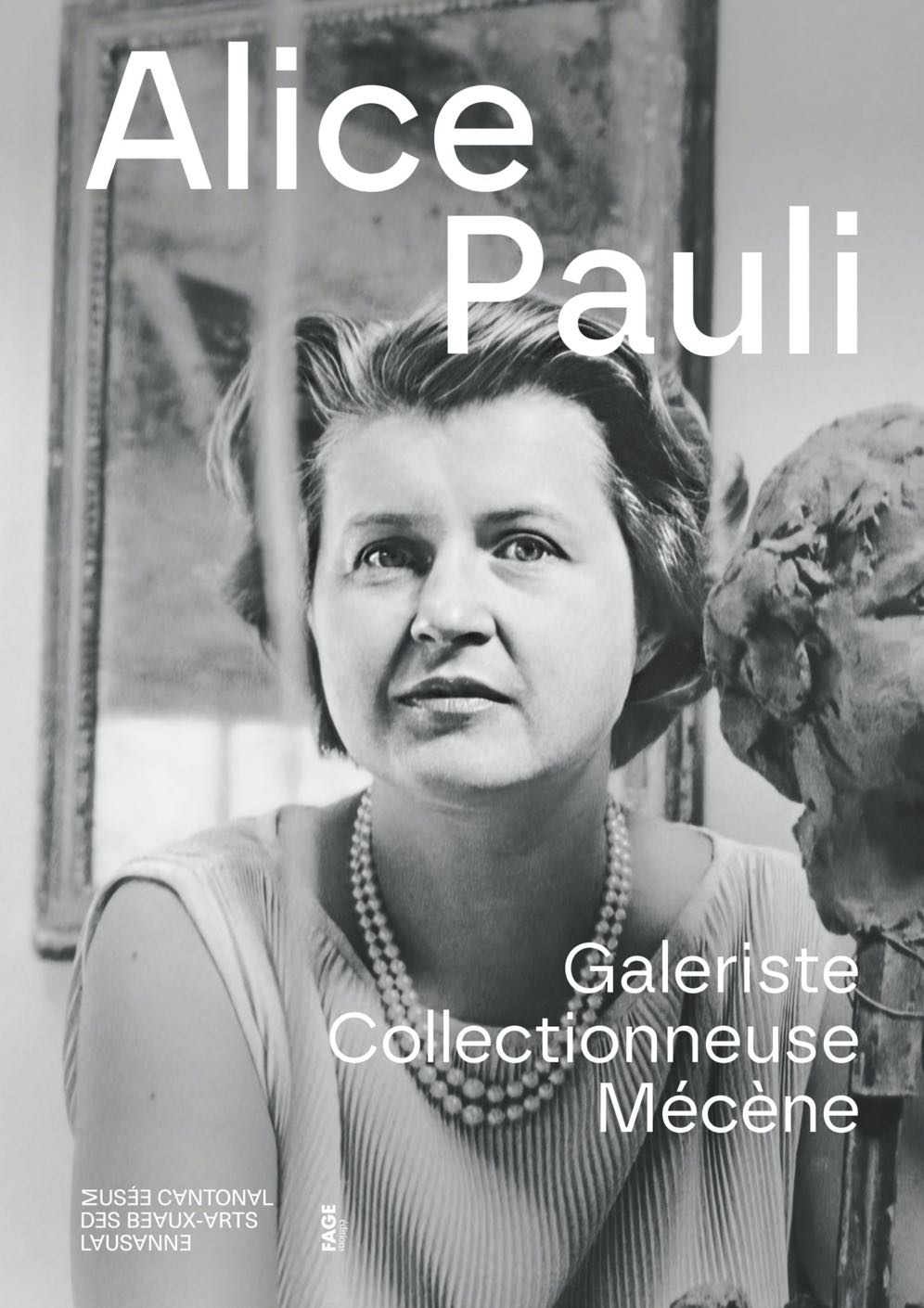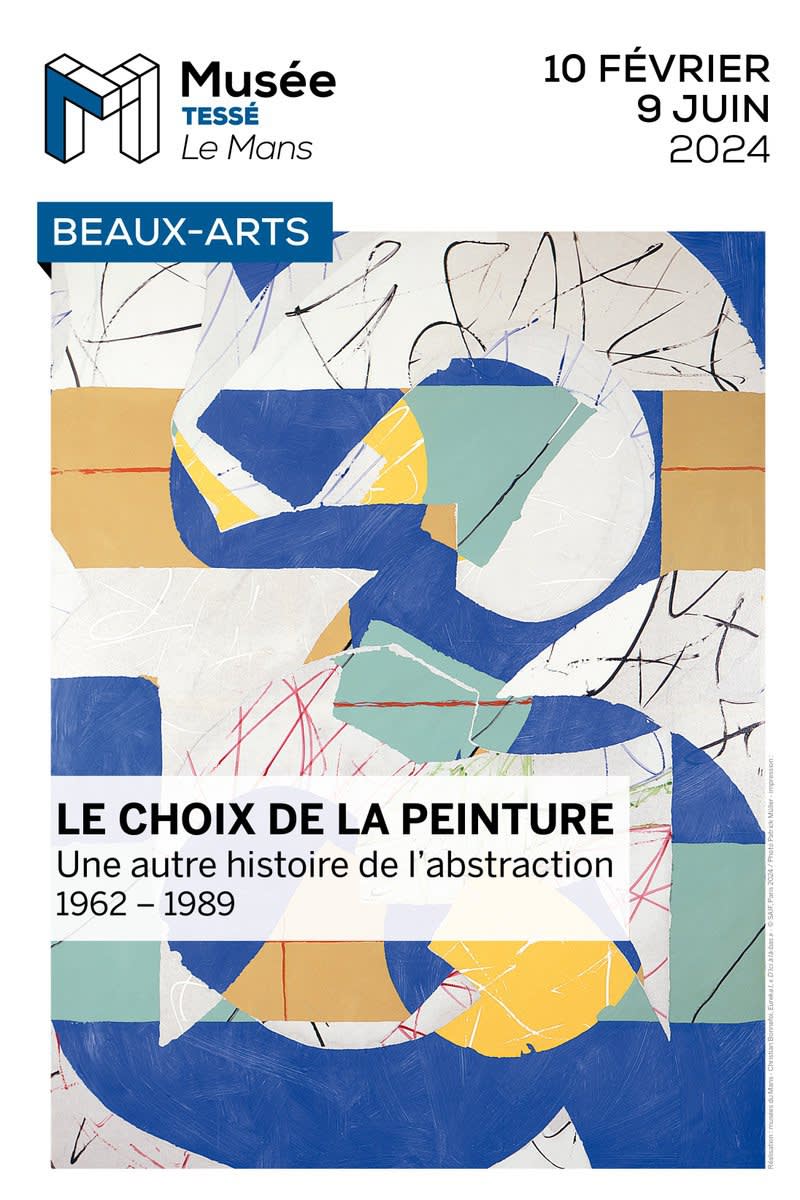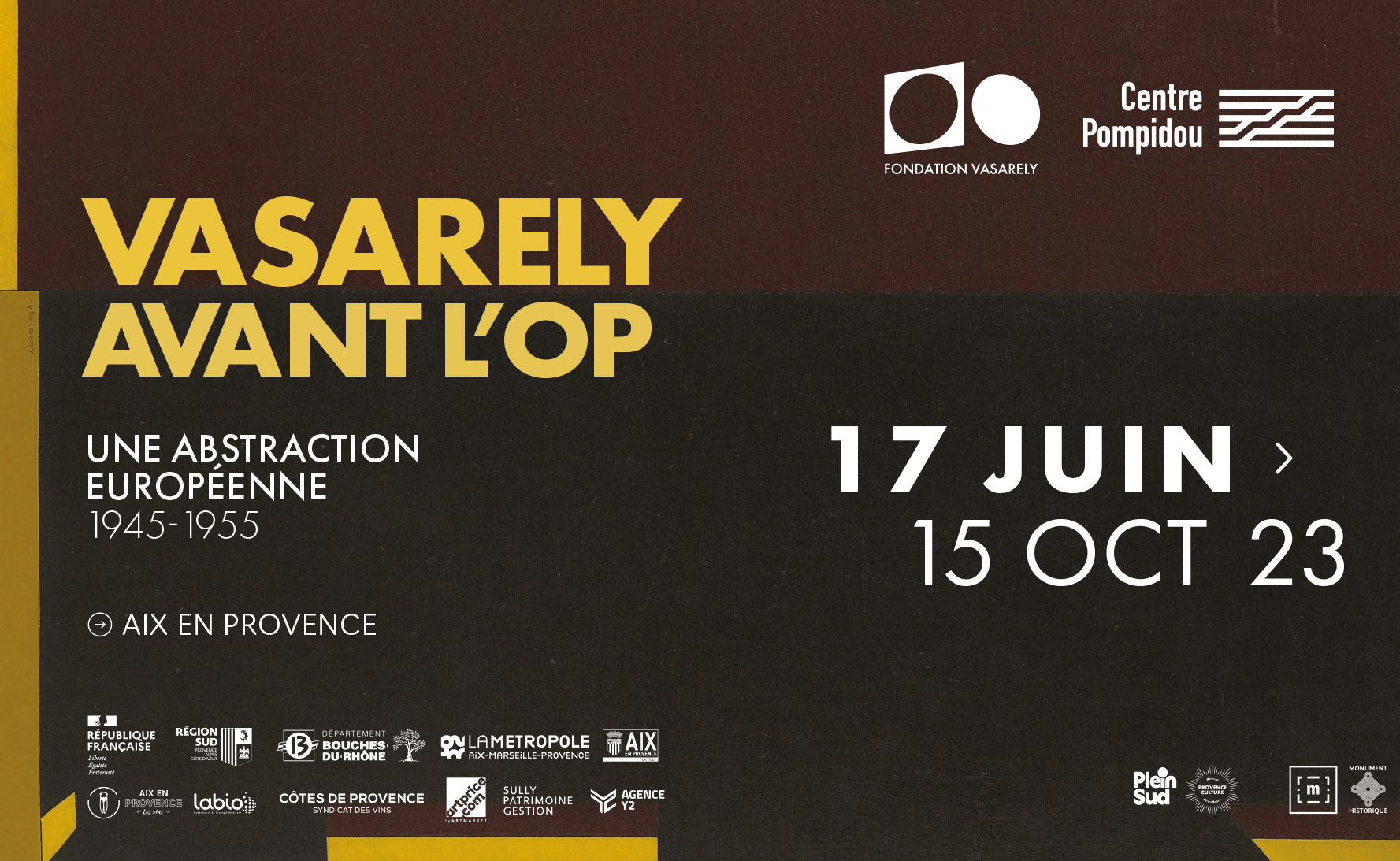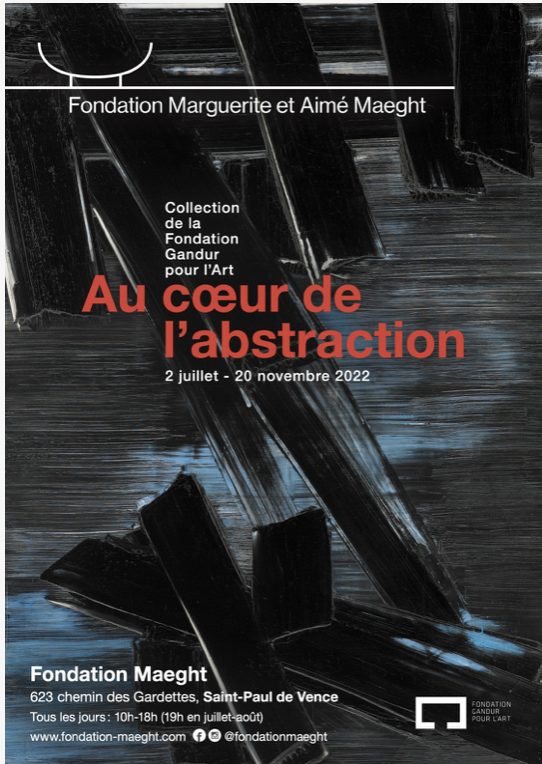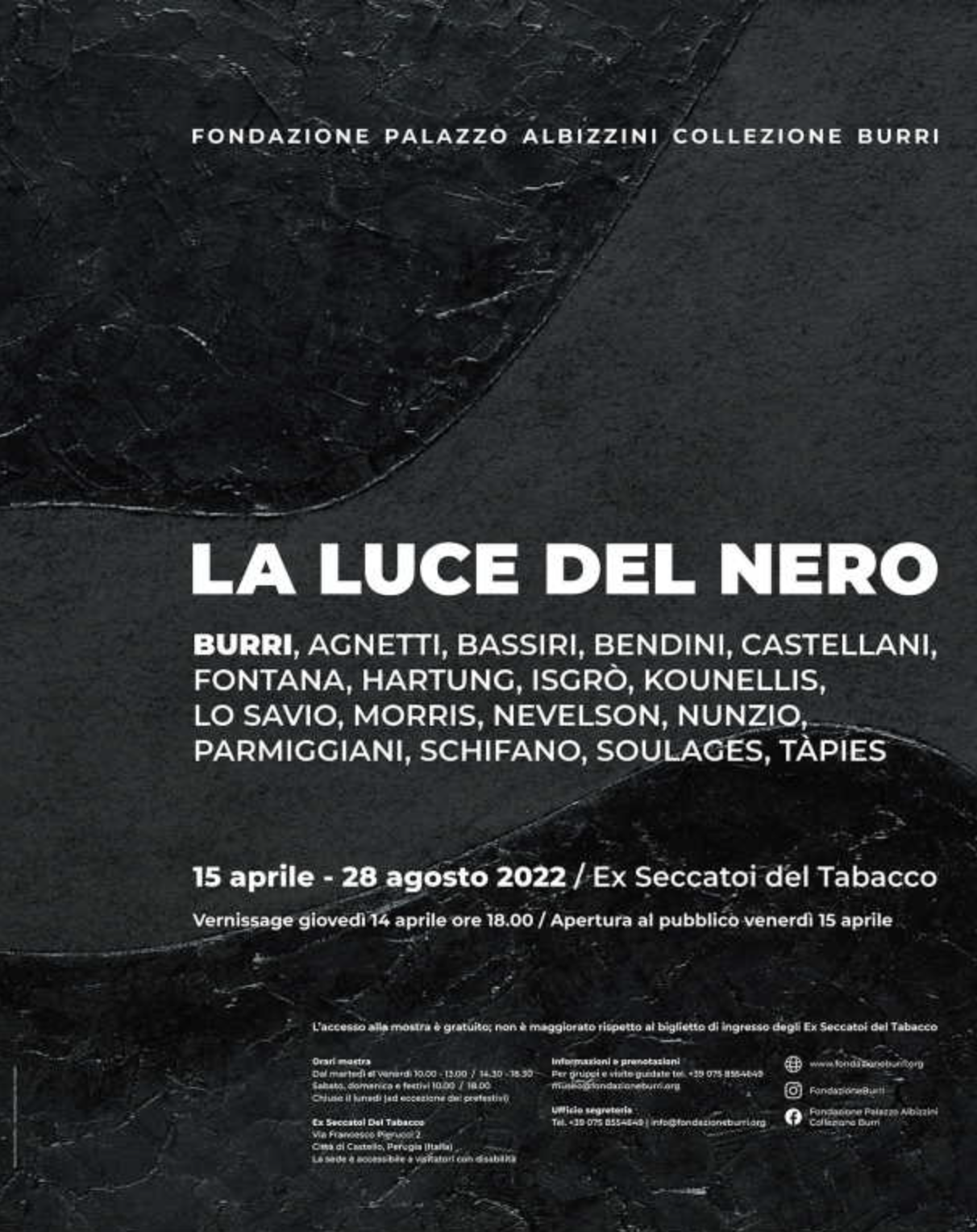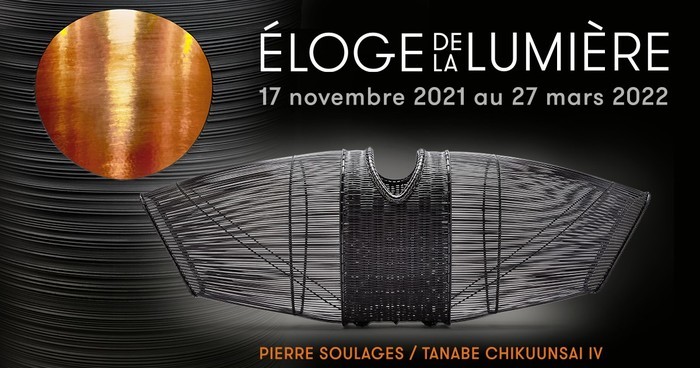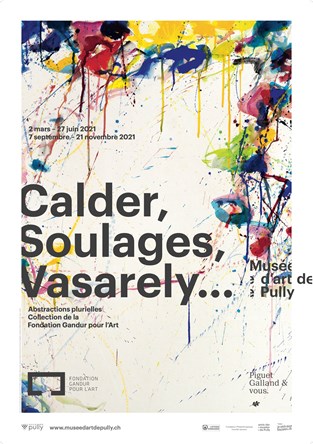Born in Rodez in 1919, Pierre Soulages is the greatest French painter of abstraction in the 20th and 21st centuries. Celebrated for his radical work, he spent his life exploring the infinite luminous possibilities offered by the colour black. Alongside Georges Mathieu and Hans Hartung, he was one of the pioneers of lyrical abstraction, which emerged in Paris in the immediate post-war period.
Soulages began to paint at a young age. He was influenced by the prehistoric art of his native region and by Romanesque architecture, which he discovered at the Abbey of Conques. The light perceived through the stained-glass windows of the church quickly sparked his interest — light, henceforth, would become the main focus of his life and work to come. Admitted to the Beaux-Arts in Paris at the age of 20, he quickly gave up his training, which struck him as too conformist. Before returning to Rodez however, he discovered modern art and the paintings of Cézanne and Picasso, which made a great impression on him. Slowly, he awakened to abstract art, to which he definitely devoted himself after the war when he returned to Paris to paint.
From 1947, Soulages began to make use of walnut stain. Applied using the tools of industrial painters, this fluid material produced a powerful contrast with the whiteness of the surrounding paper. The compositions, made of networks of brown lines with a sober, stripped-back appearance, were presented for the first time at the Salon des Surindépendants in 1947 and attracted attention and praise both from his peers and the critics. One of them was chosen in 1948 to appear on the poster of “Wanderausstellung französischer abstrakter Malerei”, the very first German collective exhibition dedicated to abstract art since the end of the war.
Soulages’ painting bears no relationship to reality. As he conceived it as early as 1948, his painting was “an organisation, a set of relationships between shapes (lines, coloured surfaces, etc.), on which the meanings which we give it are made and undone”. No representation of the world — no signs, no symbols —, but its presence, still and silent, rooted in matter. Recognised early on as one of the pioneers of lyrical abstraction, Soulages created a unique and distinctive body of work, fully engaging with the debate on the relationship between abstraction and reality that shook up the post-war artistic scene.
In 1949, his first solo exhibition was held at the Lydia Conti gallery. His career was launched, and soon, blossomed beyond national borders, especially in the United States. Supported by James Johnson Sweeney, he took part in the travelling exhibition “Advancing French Art” as well as the “Younger European Artists” exhibition at the Guggenheim Museum in 1953, and in 1954, at “The New Decade” at MoMA in New York.
After these decisive years that saw him become one of the leading figures of the avant-garde, Soulages continued his pictorial quest and explored new avenues. Alongside his black compositions on light backgrounds, new works emerged combining black with other colours. The palette remained deliberately limited but produced harmonies of great subtlety, playing with contrasts and the transparency of colours.
The year 1979 marked the beginning of the “Outrenoir” series, the most famous of the Soulages’ career and the culmination of years of research, with the black colour completely covering the surface of the canvas. Using tools that the painter himself invented, the pictorial material was applied in thick layers and successive passages to create different surface states, flat areas, streaks, stripes, reliefs — a whole vocabulary of materiality that structured a space with an undeniably sculptural dimension. From this entirely black surface, light sprang forth, offering infinite variations to the eyes of the viewer. Inseparable, black and light blend in Soulages’ painting, which carries within it a universal mystery that never ceases to raise questions.
In 2014, Soulages’ œuvre was celebrated by the opening of a museum in his hometown following a significant donation. On the occasion of his centenary in 2019, the Louvre dedicated a retrospective to his work during his lifetime, an honour and privilege previously bestowed only upon Marc Chagall and Pablo Picasso. He passed away on October 25, 2022, at the age of 102, after more than sixty years of activity.
Over a hundred of the world’s most significant public collections showcase the works of Pierre Soulages, including institutions such as the Centre Pompidou and the Musée d’Art Moderne in Paris, the Tate Gallery in London, and the MoMA and the Solomon R. Guggenheim in New York.

